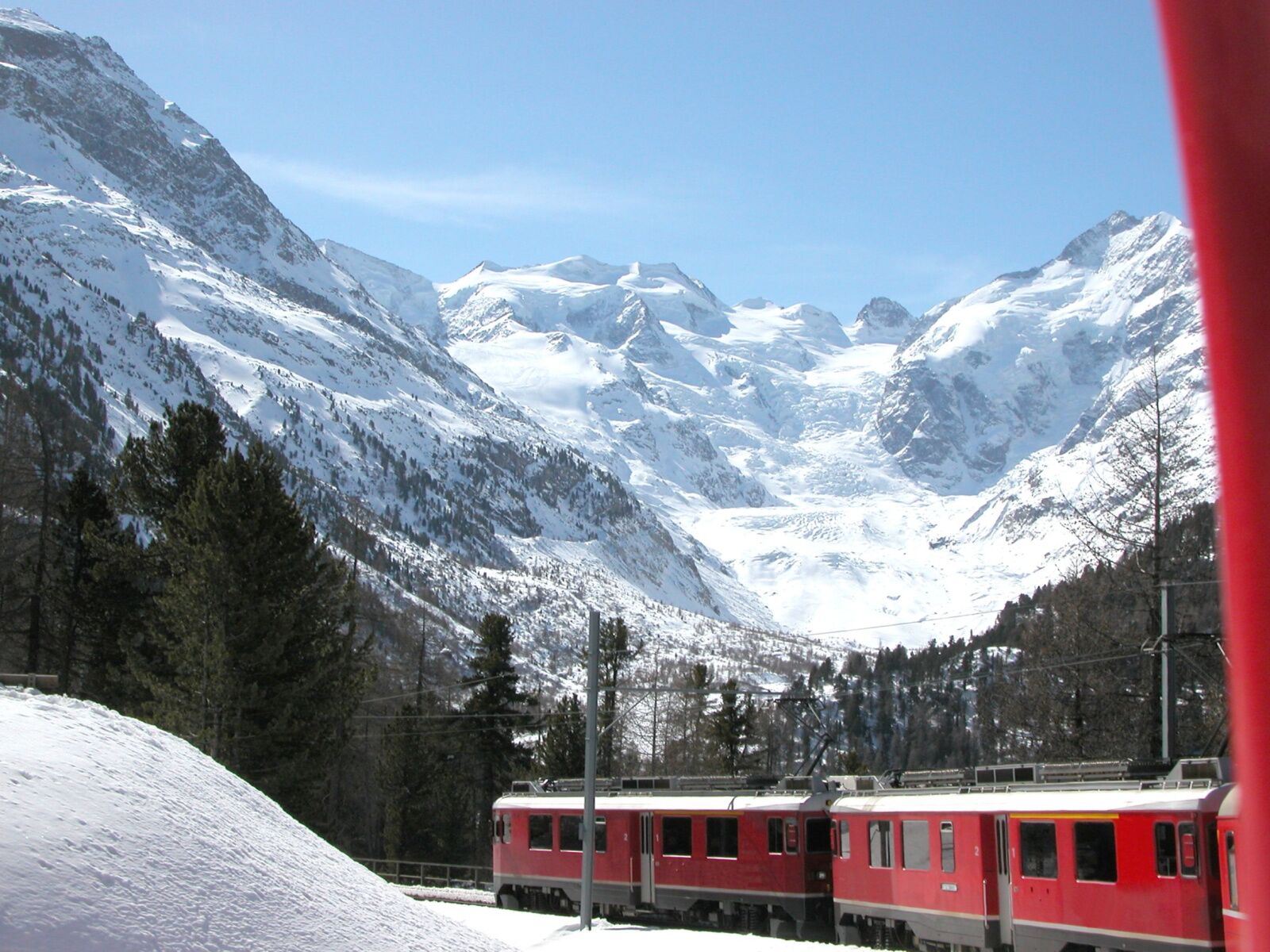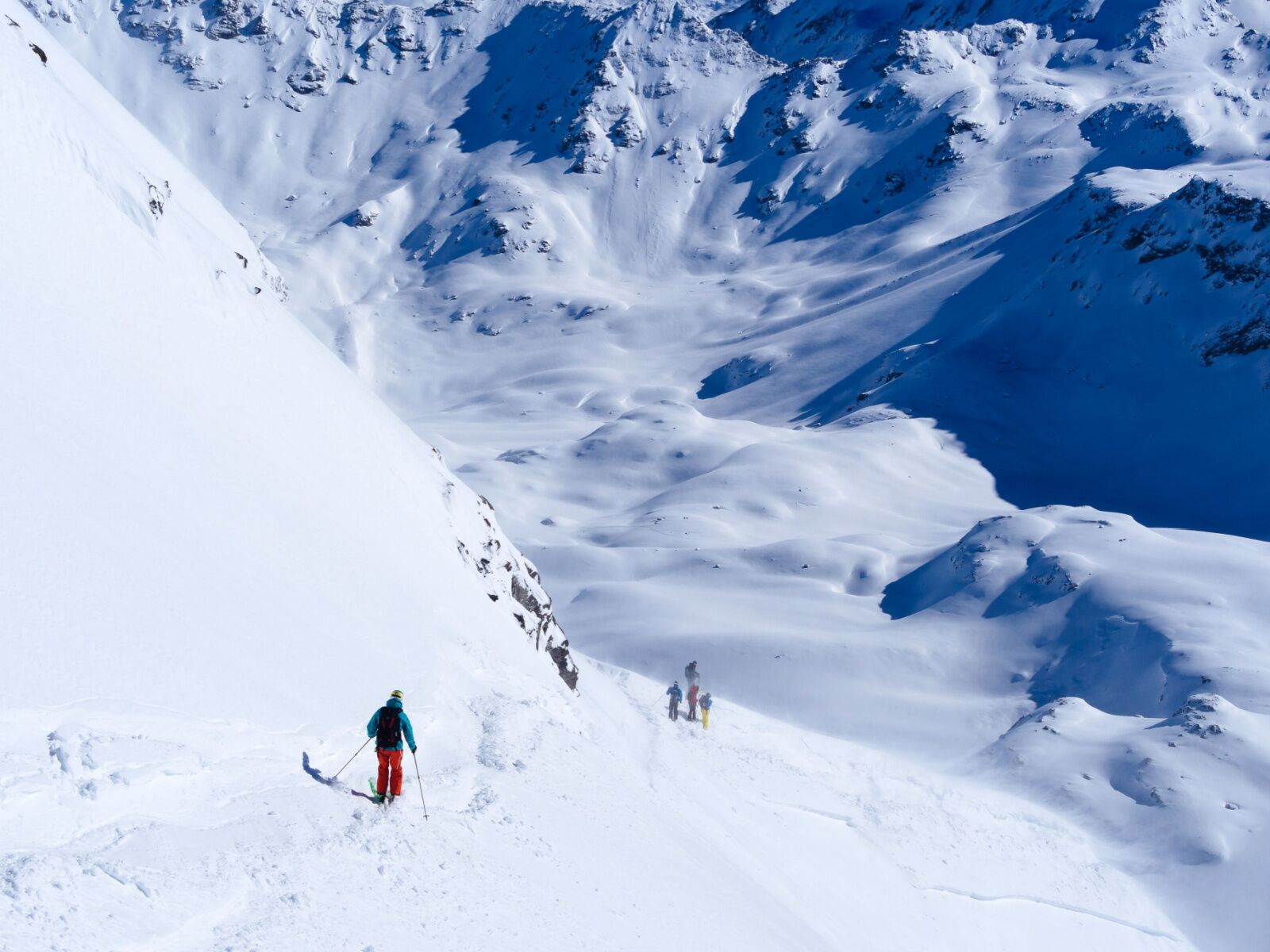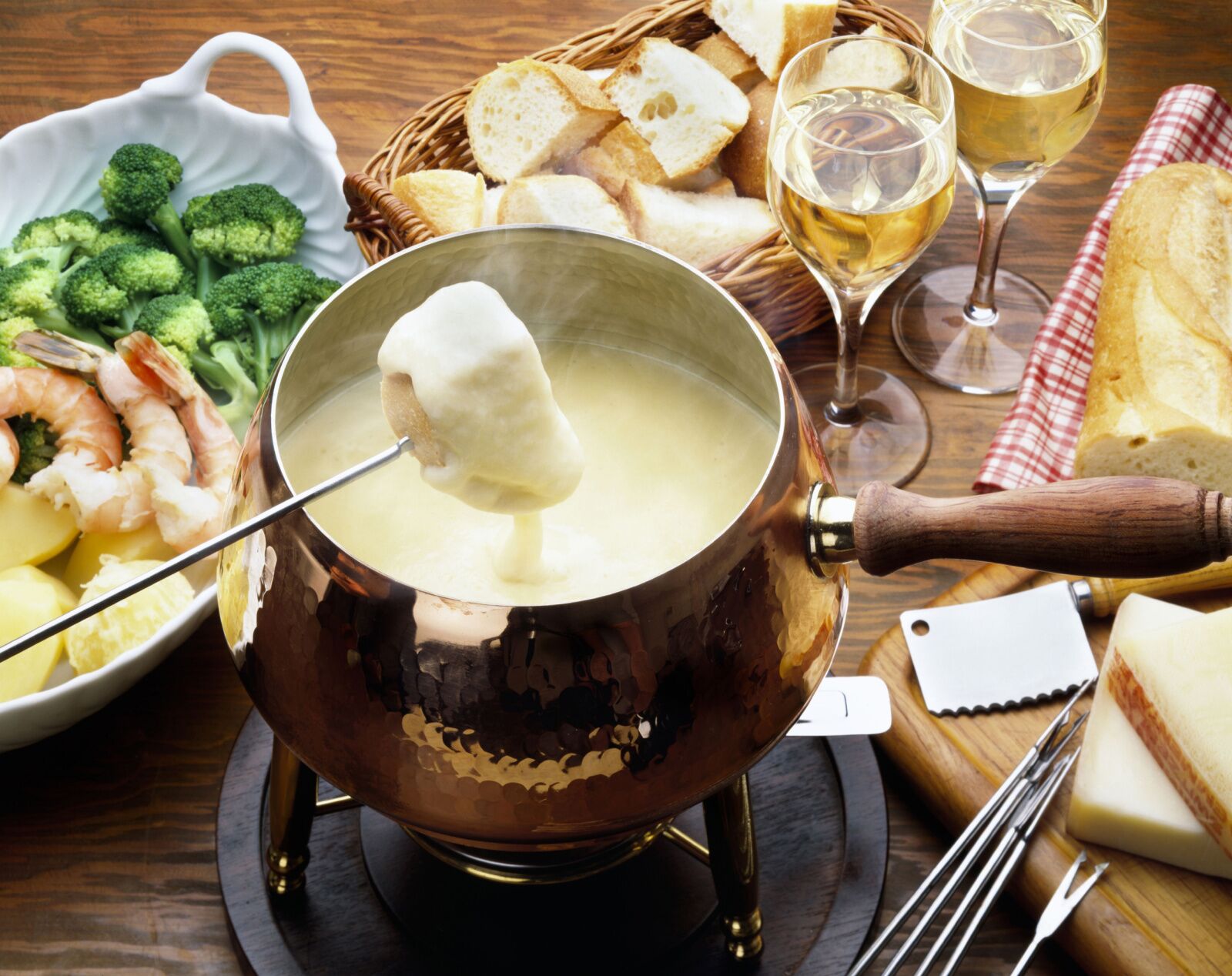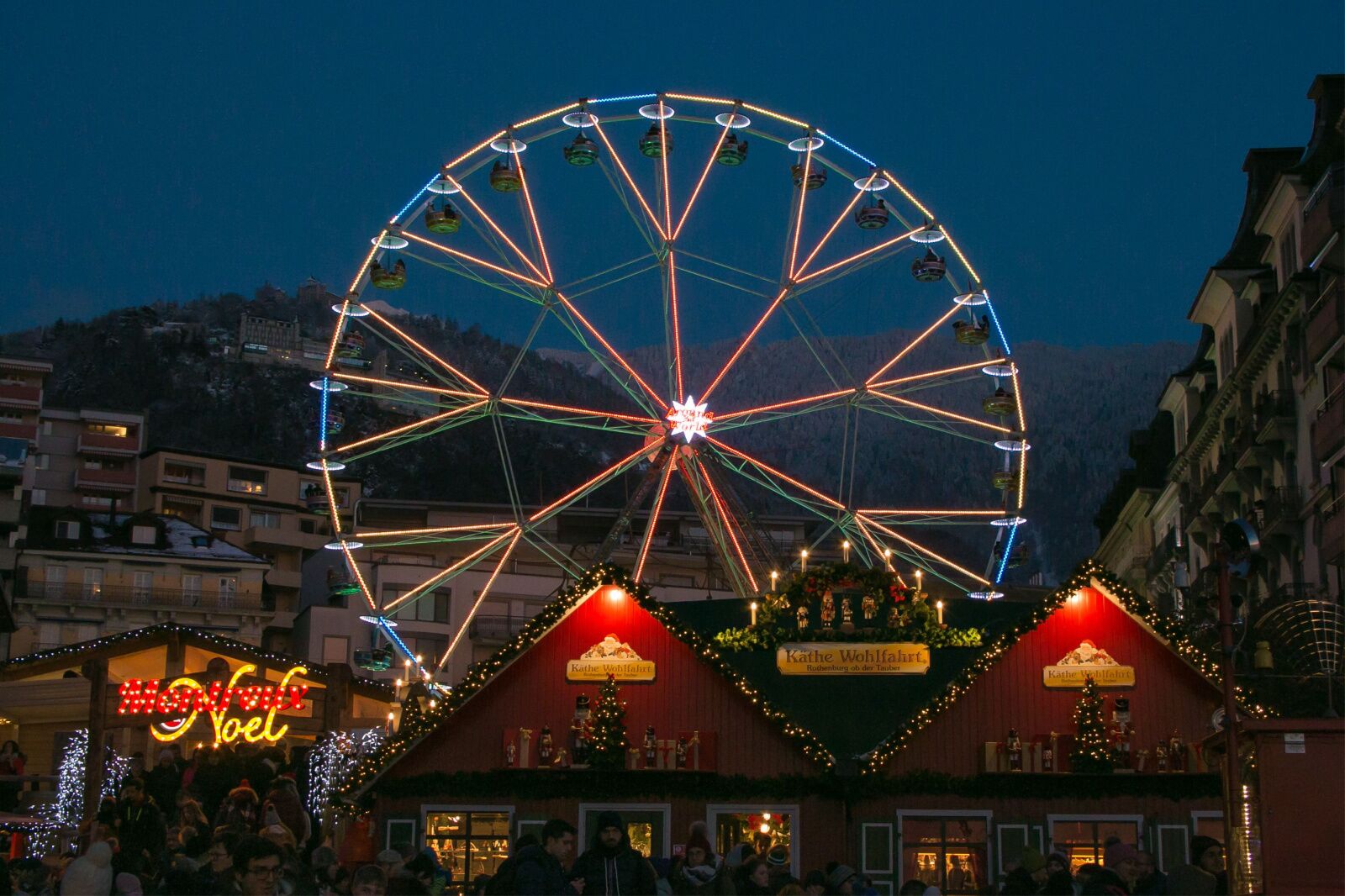North America has some top-tier, steep-and-deep resorts, such as Jackson Hole in Wyoming or Powder Mountain in Utah (considered one of the state’s best-kept secrets). But with lift ticket prices creeping ever higher (fact: it can cost twice as much to ski stateside for a day than it does in Europe), there’s never been a more attractive time to set an airfare alert and chase fresh tracks across the Atlantic.

8 Ways Skiing in Switzerland Is so Much Better Than the US
And where better to head than the birthplace of alpine winter tourism? With its sky-high mountains, majestic glaciers, and glittering lakes, Switzerland is a land of superlatives blessed by nature that boasts nine of the 10 highest peaks in the Alps – including the iconic Matterhorn on the Swiss-Italian border. The pedigree of ski resorts is legendary, too, and there are more than 300 places to go skiing in Switzerland. The country’s resorts cater to all levels, from beginners to seasoned off-piste (backcountry) skiers, and many are easily accessible by train from Switzerland’s international airports in Geneva and Zurich.
Throw in winter comfort food classics (fondue!), still little-known-but-superb local wine (hello, après ski), abundant snowfall, plus villages straight out of a storybook, and it’s a no-brainer why skiing in Switzerland should be on bucket lists this winter.
The sheer scale and size of skiable terrain is like no other

Photo: Pecold/Shutterstock
Skiing in Switzerland is as breathtaking as it gets. And with high-altitude resorts – many close to 10,000 feet above sea level — fresh powder is a near-guarantee. But in addition to heaps of snow, well-groomed trails, and world-class facilities, the sheer volume of terrain and vertical drop is hard to beat.
The top lift at Switzerland’s highest resort (Zermatt, in Canton Valais) tops out at 12,792 feet above sea level. While that’s comparable to the US’s highest ski resort (Breckenridge, whose summit sits at 12,998 feet), Zermatt’s peak is the beginning of the vertical run with the biggest drop in the entire world, inviting skiers to lose almost 7,739 feet of vert in a single run.
Vast interconnected regions where you can ski for miles also sets Switzerland apart. The longest run stateside is a 7-mile expert run from the top of Rendezvous Mountain at Jackson Hole, Wyoming. In Switzerland, the Klein Matterhorn to Valtournenche (rated red, or comparable to a difficult blue in the US) is 13 miles long and crosses the Swiss-Italian border, running from Zermatt, Switzerland, to Cervinia, Italy.
Skiing in Switzerland is (way) cheaper than in the US

St. Moritz, where a life ticket is a fraction of the cost you’d pay in the American West. Photo: Oscity/Shutterstock
Booking a flight to Europe might seem extravagant – until you start crunching the numbers. Just take a look at pricing for a single-day pass this winter at Vail Resort in Colorado, which can be as much as $299 for a single-day pass (not including any lessons or rentals). In the 1980s and 1990s, family ski trips were pricey, but still doable. These days, spending time on the mountain stateside feels more like a club for the one percent.
Nearly everywhere in Europe will be cheaper than in the US, including Switzerland, if you plan smartly and buy tickets in advance online. Even skiing in Switzerland at notoriously glitzy resorts like St. Moritz and Gstaad is cheaper. You’ll pay between $84 and $66, respectively, for an adult weekend day pass. Things jump a bit at Zermatt to $90, but it’s still a steal compared to places like Palisades Tahoe and Breckenridge in the US, where single-day rates can be well over $200.
You can save further on skiing in Switzerland with the Magic Pass, a multi-resort season pass with access to 69 ski areas. Saving on accommodations is also possible if you look for deals like the Sleep+Ski package, currently offered by 100 hotels in the Engadin region. With the package, hotels can be as low as $150 US per night, including your lift ticket for the day.
Compare that to the cheapest ski-in, ski-out resort hotel in Lake Tahoe on a weekend (you’re looking at $300 or $400 a night, plus another $50 in resort fees), and that Zurich flight probably doesn’t sound like so much of a splurge. Resort food can get spendy, but consider booking “half-board” (a European term for hotel stays that include both breakfast and dinner). Just pack picnic lunches, or hit the grocery store on your way into the resort. That way, you can save your Euros for the all-important après-ski action or the odd dinner out.
You don’t need a car

Photo: s74/Shutterstock
With fast and frequent service, the SBB rail system makes a convenient, climate-conscious, and scenic case for traveling car-free within Switzerland, especially as many resorts can be reached directly from Geneva and Zurich airports. Trains are equipped with generous ski and board storage space, views along the way are outstanding, and transfers run with Swiss precision.
Big-name destinations with easy access via Zurich include Laax (an hour or so), Gstaad (just over two hours) and St. Moritz (four hours, including one change). Geneva is the gateway airport for resorts in the canton of Valais, including Saas Fee, Verbier, and the “Matterhorn Ski Paradise” of Zermatt. Trains are affordable, too; expect to pay about $36 for a second-class point-to-point ticket between Geneva and Verbier. The train takes 2 hours and 20 minutes, including the cable-car ride from Le Châble to Verbier village.
For non-ski days, consider riding the legendary Glacier Express sightseeing train, running since 1930. Board in either Zermatt or the tiny resort spa town of St. Moritz and watch the Swiss countryside unfold over the journey. If you’re willing to splurge, you can opt for a five-course wine-pairing menu for about $500 per person.
There’s also the Orient Express-style Belle Époque, traveling to Gstaad via Lake Geneva.
You can ski between three different countries

Photo: Vvoe/Shutterstock
When you go skiing in Switzerland, you can have lunch in France but be back to Switzerland in time for après. It’s possible when you ski at one of the 12 resorts near the French-Swiss border, known as Portes du Soleil (“Doors to the Sun”). It runs for about 400 miles between Mount Blanc and Lake Geneva, and is serviced by three cable cars, 10 gondolas, 76 chair lifts and 125 surface lifts (magic carpets and J-bars and such). Combined, it’s the second-largest ski area in the world.
But it’s not the only place where you can make a border crossing on skis. From Zermatt, you can ski to Cervinia, on the Italian side of the Matterhorn. You’ll need to buy the Unlimited Cervino Paradise pass to explore the combined 223-mile region (and keep track of the time to avoid missing the last lift back).
From the high-alpine village of Samnaun on the eastern end of Switzerland, you can ski into the Austrian resort of Ischgl. You’ll need the Silvretta Ski-Arena Samnaun/Ischgl pass ($79 per day).
Backcountry skiing is A-ok

Photo: Alex Jackson/Shutterstock
Many US resorts border land managed by the Forest Service, so at many resorts, ski patrol takes a dim view of ducking the rope to access the backcountry. Depending on the resort, it may be fine, or it may result in hefty fines and $50,000+ bill for a rescue operation, should you need it.
But in Switzerland, it’s cool to ski away off the official trails. The US calls it backcountry and sidecountry skiing; in Europe, it’s called skiing off-piste (“piste” is the term for official, mapped ski runs). Remember that off-piste terrain isn’t groomed or monitored in any way, so it should only be attempted by expert skiers and riders with the proper safety gear (beacon, probe, etc).
Bruson, Verbier, and Grindelwald are especially well-known for backcountry riding, and each one offers various technique and safety classes and programs for beginner to advanced backcountry skiers and riders.
Après-ski in Switzerland is unlike anywhere else in the world
Après ski is an essential part of skiing in Switzerland. And after a day on the slopes, parties can range from refined — perhaps with an Aperol spritz or a few glasses of champagne — to truly wild, Jägermeister-fueled affairs.
Post-ski socializing usually starts when the lift stops running around 4 PM and can stretch into the early hours of the morning. Kicking things off with a warm cocktail is considered traditional – perhaps a kafi luz (coffee with fruit brandy), but mulled wine is also quite popular. Ask for vin chaud in French or glühwein in German. It pairs quite well with fondue.
Sophisticated après locations include the Mountain Club at El Paradiso in St. Moritz (or the rustic-chic Alpina Hütte) and Chesa Grischuna, a chalet with Old Hollywood credentials in Klosters. For something on the buzzier side with DJs and live music, check out Le Farinet or La Le Rouge, two standouts in Verbier, known for epic après ski. Another resort noted for its lively nightlife is Flims, where much of the après -ski action goes down at the Arena Bar inside the Arena Hotel at the base. In Zermatt, dance parties can rage until dawn at the Broken Bar Disco at Hotel Post.
Swiss ski resort food is so, so much better than the US

Photo: KPG-Payless2/Shutterstock
Switzerland is unbeatable when it comes to cheese and chocolate. It’s a gourmet paradise – there are currently 138 Michelin-starred restaurants across the country – with dishes influenced by French, German and Italian culinary traditions.
Graubünden is famous for its air-dried beef (bündnerfleisch) and walnut cake (engadine), while specialties from the only Italian-speaking canton (Ticino) include polenta and risotto. In French-speaking Geneva, expect to see plenty of longeole sausage flavored with fennel seeds, while Fribourg is famous for the Gruyère cheese used in the renowned national dish: fondue. It’s one of the coziest winter foods and an essential part of the experience of skiing in Switzerland.
Among international experts, Swiss wine is still a bit of an insider secret, with most of the exports going only to Germany. But the country is home to six stellar wine-growing regions. Vaud is best known for chasselas wine used in fondue, Neuchâtel for ruby-red pinot noirs, and Ticino for merlots, thanks to its Mediterranean-esque climate.
Switzerland’s villages and Christmas markets are stunning

Photo: Buffy1982/Shutterstock
America might have a handful of European-inspired ski towns, like Colorado’s Vail and Sun Valley in Utah, but nothing exudes old-world charm like a storybook Swiss alpine village filled with snow-dusted, wooden chalets. Visit during the holidays, and the country’s famed Christmas markets only elevate the Yuletide magic, transforming towns from late November through December 24.
Standouts include the long-established market in Zurich’s Old Town, while Montreux claims to have one of the prettiest in Europe. Ski resorts get in on the action, too, with a Christmas market held past New Years in Villars (dating to the 12th century) and postcard-perfect Saas-Fee (a.k.a. “The Pearl of the Alps.”) It sits at the foot of the highest mountain in Switzerland, with a festive market that transforms the square with twinkling lights, a rideable Christmas train, artisan markets, and huts stocked with plenty of traditional glühwein.